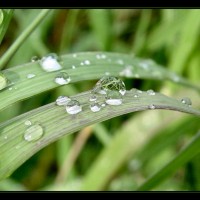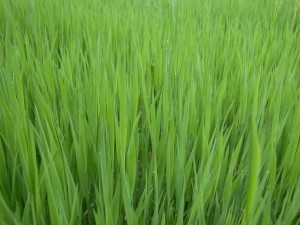

Sustainable Livestock Nutrition For Spring

Your livestock needs a steady supply of nutrients such as proteins, vitamins, minerals, and fibers just like humans. Some foods you purchase for your livestock from the feed supply stores provide only the basics, while others are designed to give your animals a complete range of nutrients, proteins and vitamins for extra strength and endurance for the wet spring weather.
During the winter, forage at pastures is limited and hay is the usual diet for horses, cattle, goats, sheep and all other similar animals. Good quality hay is the ideal feed for your cattle during the winter and spring, but hay could become expensive if you need to buy it in large quantities for your farm animals. With some planning you could feed your animals food supplements and fodder, using more cost effective alternative methods during the spring season, before returning to the lush pastures.
Micro green fodder
If you are feeding your animals hay, the nutrition value of hay depends on the leaves it contains. If it contains more immature grass or grass in the young growing stages, it is usually more digestible and also has higher nutrition value with more protein and vitamins in it. If the hay has more leaves that are mature and fully grown, it usually becomes richer in fiber. Legume plants however do not change much as they grown older, however the stem can become more fibrous and coarser with age. For example, the alfalfa stems are woody which provides structural support to the plant. Therefore, it is very important to ensure a high leave to stem ration in hay for higher nutrition value.
Fortunately, you can find superior quality and sustainable alternatives to traditional feed or expensive hay, which is high in nutrition value to feed your livestock while you wait for your pastures to turn green in the spring. We have been successfully growing micro greens such as barley and wheat, using only organic methods and totally scientific systems that yield 5 pounds of crop from a pound of seed. You can get as little or as much as you want from us.
What are Hydroponic Forages?
Typically, the hydroponic system uses water to grow shoot from seeds. A simple tray of seeds can grow 6-8 inches of shoot within a week with only water. This system can successfully grow plants such as wheat, barley, sunflower, and legumes, such as peas, with regular watering. You could get up to 50-60 pounds of forage form a 10 pound bag of seeds. The young grasses that you produce through your system are highly palatable for your livestock. Animals love the green grasses and it is also highly nutritious and digestive.
DIY Sprouted fodder
 A sprouted DIY fodder system is an easy way of growing your own fodder without much effort. It’s a simple and cost-effective way of feeding your livestock, which is also a scientific and sustainable method. You wouldn’t believe how simple it is to grown your own fodder rich in nutrients that you can harvest, usually within a week, and you will get most of the supply and support from us. Think about it: A 50 pound bag of seed could turn into 300 pounds of feed in less than 9 days, which contains more nutrients than what you would buy anywhere else. Imagine the money you’d be saving in feed bills.
A sprouted DIY fodder system is an easy way of growing your own fodder without much effort. It’s a simple and cost-effective way of feeding your livestock, which is also a scientific and sustainable method. You wouldn’t believe how simple it is to grown your own fodder rich in nutrients that you can harvest, usually within a week, and you will get most of the supply and support from us. Think about it: A 50 pound bag of seed could turn into 300 pounds of feed in less than 9 days, which contains more nutrients than what you would buy anywhere else. Imagine the money you’d be saving in feed bills.
Providing high quality feed for commercial or home grown livestock is a key factor in any farm, whether for personal or commercial consumption. Price, quality and availability of feed all play a significant role in raising animals. Once you can ensure the availability of high quality and nutritious feed for your livestock, you may also focus on other concerns of animal care and minimize your overall expenses of animal care.
We’d appreciate your comments on this blog, a share would also be nice.
Source: Sustainable Livestock Nutrition









